Posts Tagged: Xerces Society
A Wake-Up Call to Conserve California's Monarchs
It's been called a "wake-up call." And that it is. It's designed to alert people to a problem that needs fixing. And that's good news for the...
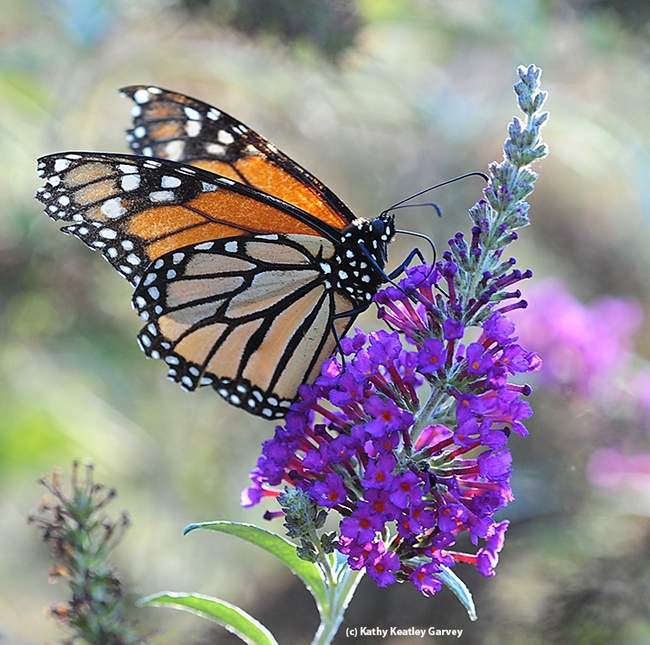
A monarch butterfly nectaring on a butterfly bush in Vacaville, Calif. today (Oct. 10). (Photo by Kathy Keatley Garvey)
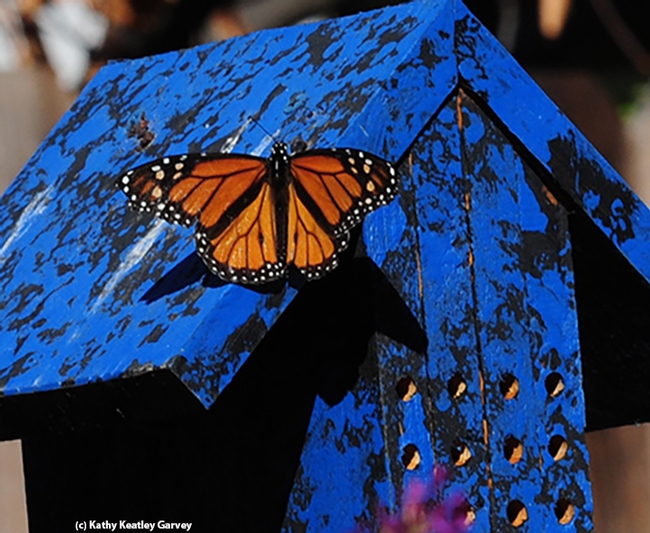
A male monarch touches down and rests on a bee condo in Vacaville, Calif. (Photo by Kathy Keatley Garvey)
'Bee' One in a Million
You can "bee" one in a million. You can "bee" more than you ever thought of "bee-ing." And when you do, you'll be helping the bees, butterflies,...

Matthew Shepherd's front yard at his home in Beaverton, Ore., draws scores of pollinators. (Photo courtesy of Matthew Shepherd)

Matthew Shepherd's backyard at his home in Beaverton, Ore. (Photo courtesy of Matthew Shepherd)
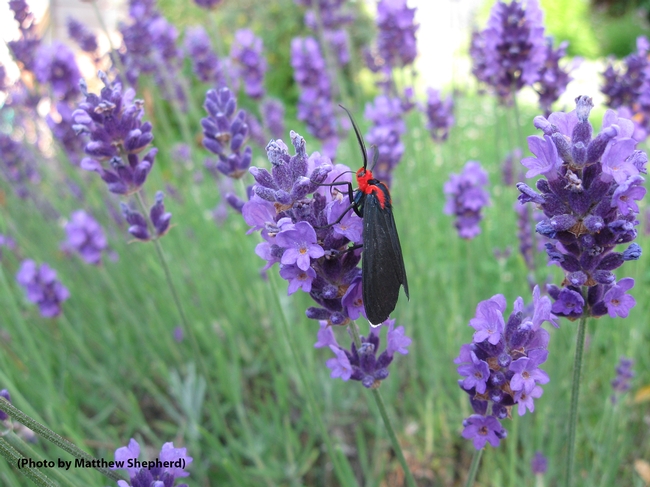
Red-shouldered ctenucha moth (Ctenucha rubroscapus) on English lavender. (Photo by Matthew Shepherd)
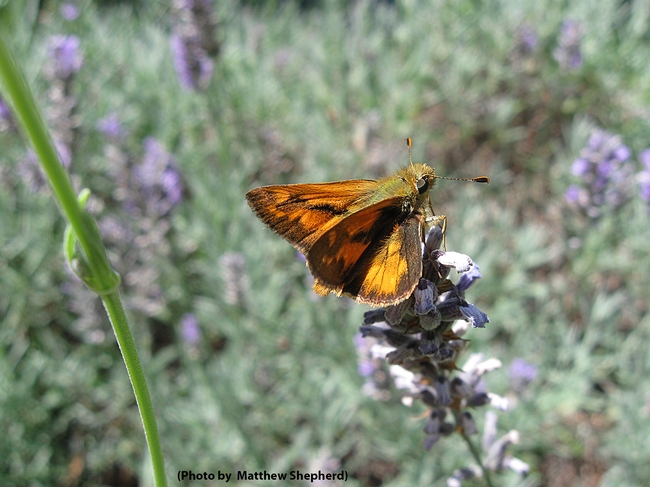
Woodland skipper (Ochlodes sylvanoides) on English lavender. (Photo by Matthew Shepherd)
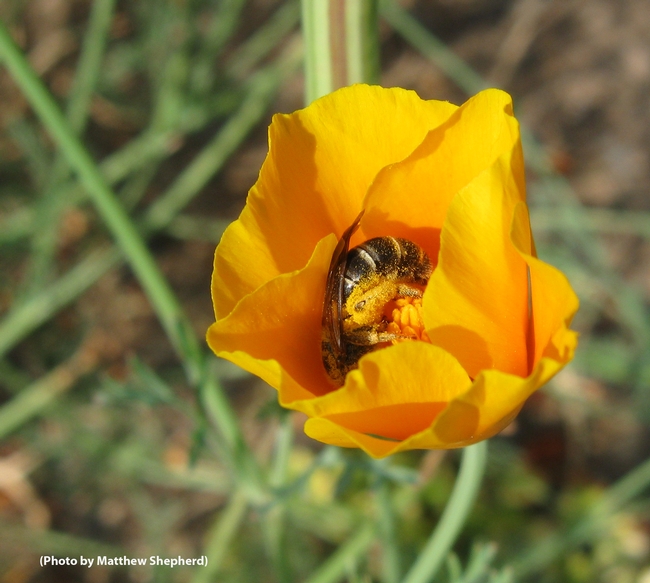
A sweat bee (Halictus sp.) in California poppy. (Photo by Matthew Shepherd)
Go West, Young Monarch, Go West!
Westward, ho! The western migration of the Monarch butterflies (Danaus plexippus) to their overwintering sites along the California coast is...
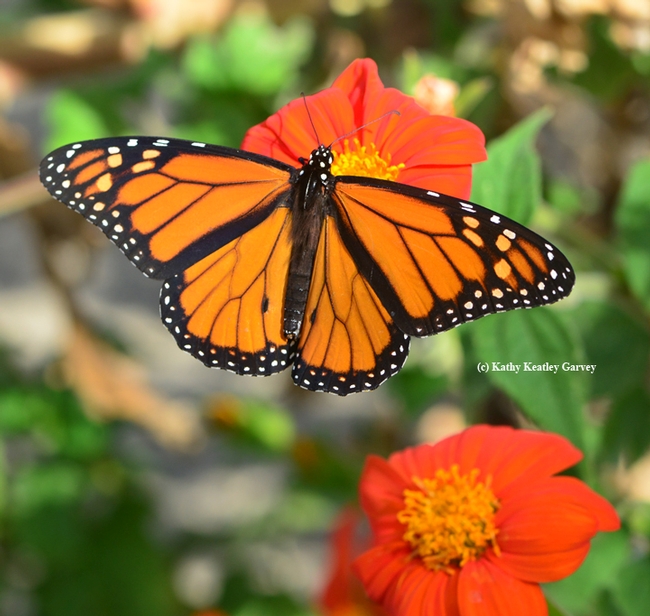
A male Monarch nectaring on Mexican sunflower (Tithonia). (Photo by Kathy Keatley Garvey)
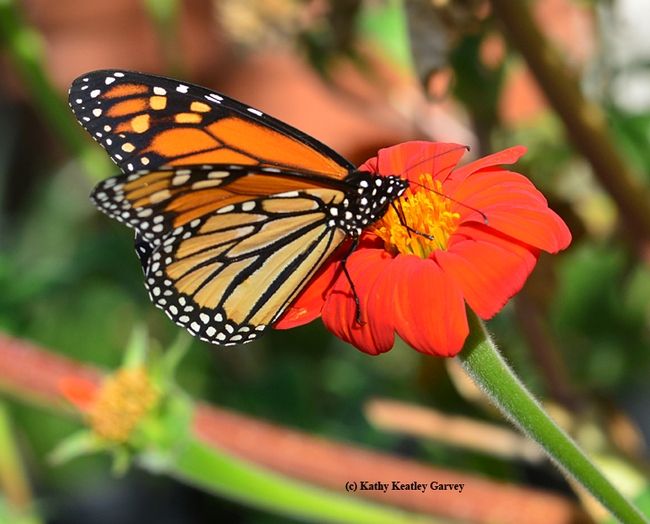
Side view of the Monarch. (Photo by Kathy Keatley Garvey)
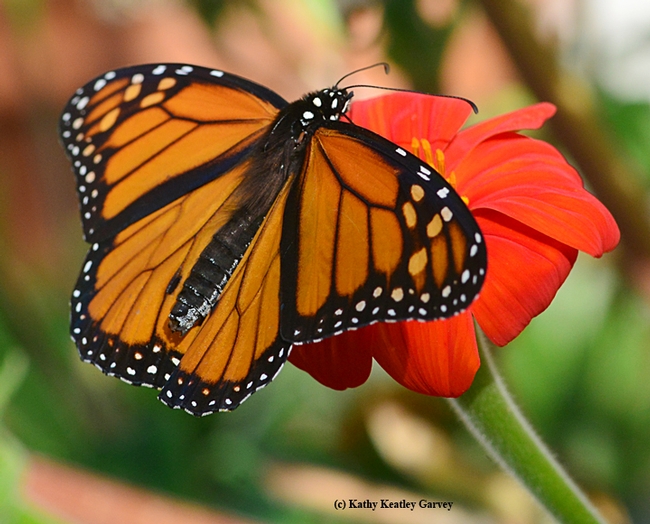
Monarch gets ready for flight. (Photo by Kathy Keatley Garvey)
Saving the Monarchs
The Xerces Society for Invertebrate Conservation issued news today that is both disturbing and hopeful. Disturbing in that the monarch butterfly...
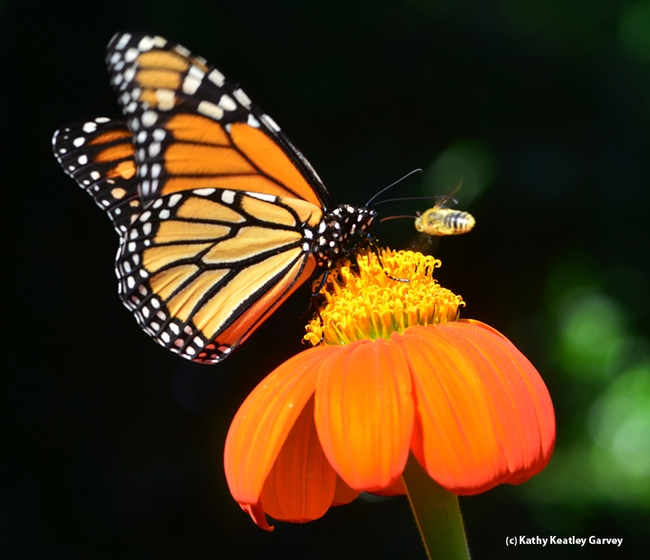
Monarch butterfly nectaring on Mexican sunflower, Tithonia, as a territorial male longhorned bee, Melissodes agilis, takes aim. (Photo by Kathy Keatley Garvey)
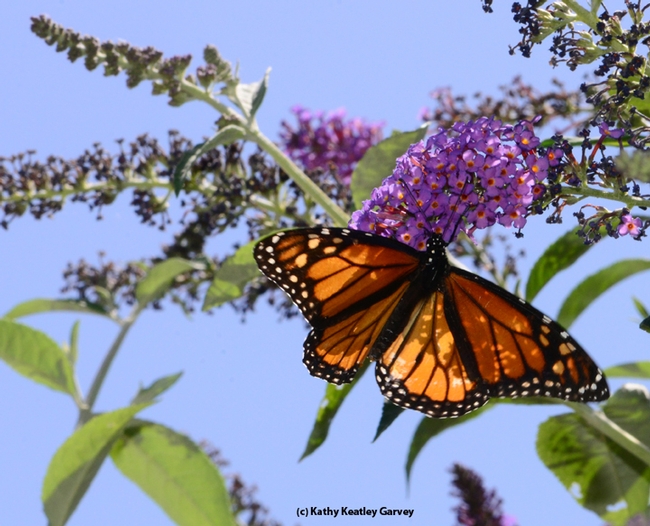
Monarch butterfly heading toward a butterfly bush. (Photo by Kathy Keatley Garvey)
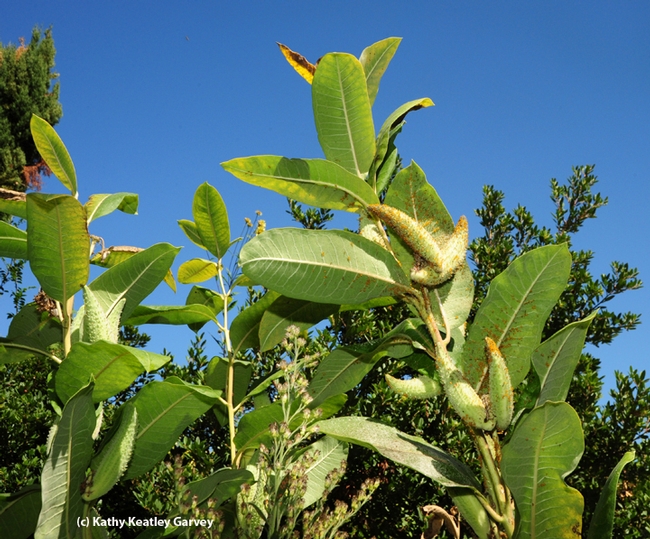
This is milkweed, the monarch's host plant. (Photo by Kathy Keatley Garvey)
The Good Guys--and Girls!
Think of them as "the good guys" and "the good girls." Insects such as lacewings, lady beetles and flower flies. We're delighted to see that the...
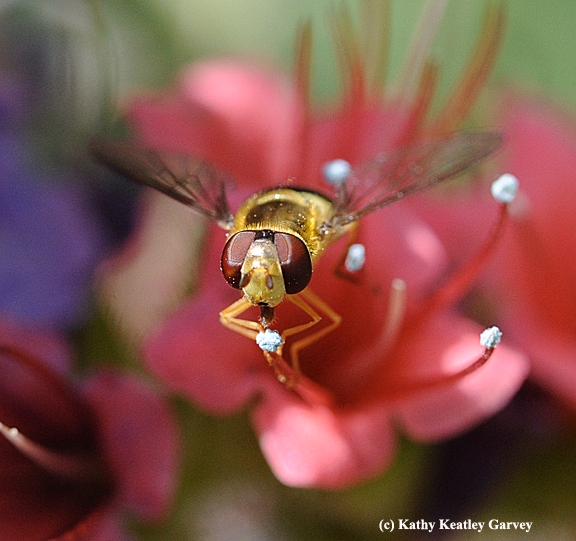
A syrphid fly, aka flower fly or hover fly, nectaring on a tower of jewels. (Photo by Kathy Keatley Garvey)
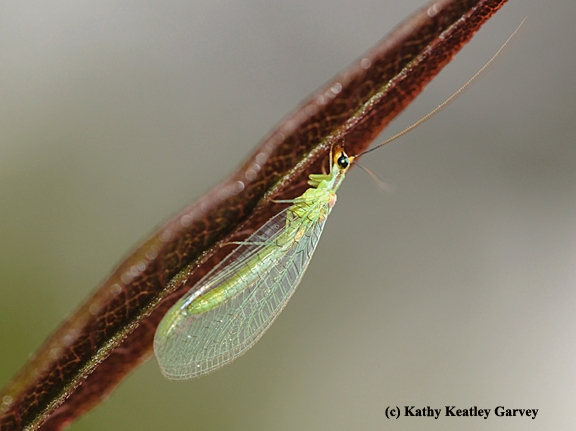
A lacewing glows in the afternoon sun. Larvae eat such soft-bodied insects as mealybugs, psyllids, thrips, mites, whiteflies, aphids, small caterpillars, leafhoppers, and insect eggs, according to the UC IPM website. (Photo by Kathy Keatley Garvey)
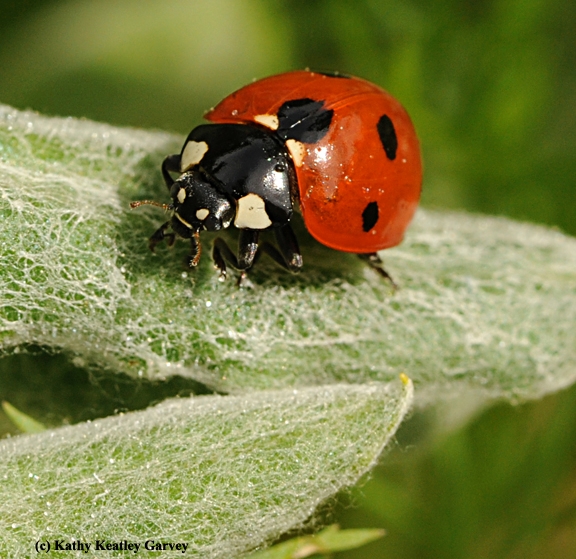
The lady beetle, aka ladybug, is well known for its voracious appetite of aphids. (Photo by Kathy Keatley Garvey)

